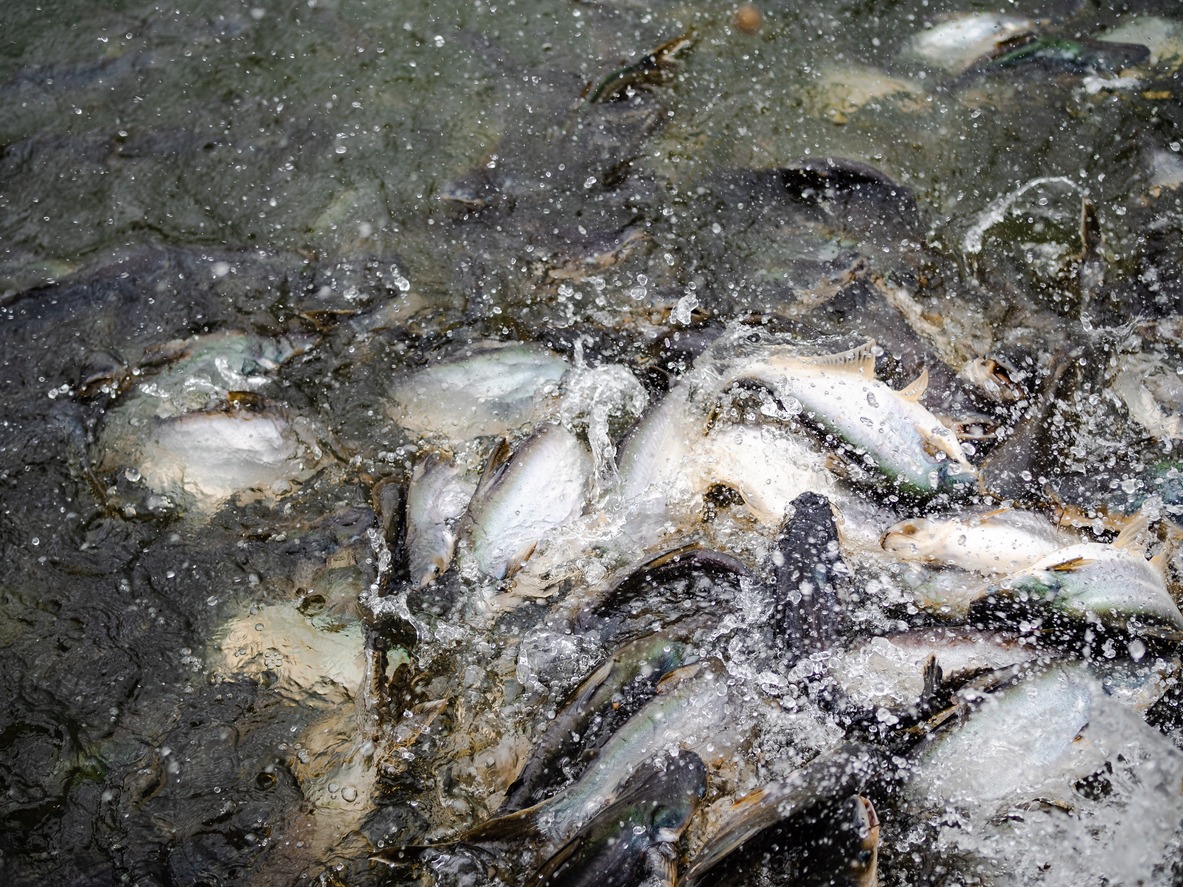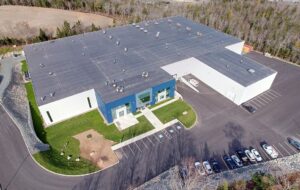You’ve likely dabbled in aquaculture as a kid. Feeding our fishes pellets and taking delight in seeing their bellies swell. Then, they stop eating. So we wait until they’re feeling peckish again to rain down on them with more food.
Days go by, and one by one, they pass away. “They don’t live long,” we tell our young selves, not realizing they probably died from overfeeding. That, or too much food waste in the tank, which made them sick. (Or perhaps we just forgot to feed them).
It turns out, our childhood hobby has real-life applications and larger-than-life consequences.
Overfeeding and underfeeding is a key issue fish farmers grapple with on a daily basis. And it’s what’s observers say is destroying the environment, in terms of aquaculture. What if we said there was a way to know when they were going to be ready to eat again? And how much they needed to eat? And when? Finding the closest fit to those answers could minimize the damage done, at least, from would-be overfeeding.
“Taking the guesswork out of fish feeding”
Aquaculture tech start-up UMITRON has come up with the Fish Appetite Index (FAI), a detection system that “takes the guesswork out of fish feeding.” It uses efficient machine learning and image analysis techniques to quantify just how much fish want and need to eat.
“Farmers must walk a tight line – underfeeding their fish risks lower growth rates and slower time to market – while overfeeding increases costs and potentially harms the environment,” says the company, which was founded in 2016 in Singapore and Japan.
“In some cases, a farmer only has a limited amount of time to feed and observe each cage before needing to move onto the next one. New tech, such as IoT devices and machine learning, offer farmers a solution to improve their feeding operations, with the use of efficient data analytics.”
How does the tech work?
The FAI algorithm observes fish-eating behavior along with the circumstances, before scoring their appetite and presenting the data in an easy to understand chart. When used with a smart feeder, feed time intervals and amounts can be adjusted with minimal human interference.
“Farm operators can utilize FAI to fine-tune their feeding schedules, ensuring fish are always satiated. This is easily done via their smartphones with the UMITRON app, where they can check and remotely adjust feed settings based on the FAI feedback,” the company says.
In one of the most impressive early-stage aquaculture tech deals, UMITRON raised a total of S$15.2 ($11 million) in an expanded seed funding round last September.
We caught up with UMITRON cofounder & managing director, Masahiko Yamada, to get an update:
Joe Gan: Tell us more about what the company UMITRON stands for?
We established UMITRON to install sustainable aquaculture on earth. For us, that meant finding tech solutions that improve farmers livelihoods, while also reducing their farm’s environmental input.
We first came up with the idea of UMITRON after observing Earth from satellite images. Seventy percent of the Earth is ocean, but we realized only a small area of the world’s oceans was being used by various industries. At the same time, we saw that aquaculture has huge potential to provide a sustainable and steady source of protein for the world.
We were thinking about how to use satellite data for aquaculture, since both myself and fellow co-founder Ken have backgrounds in aerospace engineering. But we also saw the opportunity to use other tech, such as machine learning and IoT.
How are some ways that your technology has already improved the lives of farmers?
A great example is how farmers tell us they finally have their weekends back. Previously, a farmer had to visit their cage seven days a week to ensure they were feeding their fish properly.
Using UMITRON CELL, farmers can now remotely monitor and feed their fish, this allows them to stay onshore during the weekend or during dangerous weather conditions.
Allowing farmers to have a flexible schedule is one key way we can improve their livelihoods, and potentially make the industry more attractive to the next generation.
What is your outlook for the aquaculture sector?
The outlook for the aquaculture is rosy. Demand for seafood products is especially strong in Asia, where increasing affluence is leading to consumers purchasing more fish and shellfish.
In Europe and the US, there is also strong demand especially as more consumers see the health benefits of consuming more seafood.
This demand can only be met by aquaculture, since global wild fisheries cannot sustainably increase their production. Wild fishery production has been more or less stable since 1990, whereas year-on-year growth in aquaculture has been around 8%.
We are at the point now where we farm more fish than we harvest. And now, as the industry matures, we are seeing farmers using more sophisticated methods of production. We are also seeing an increased emphasis on sustainability.
There has been lots of criticism of the quality of today’s fish. Would UMITRON be able to help improve the quality of produce?
Quality assurance and control is really important for the aquaculture sector. The previous challenge was how to replace trash fish feed with pelleted feeds for nutrition and flesh uniformity. Now, by using new types of feed such as plant-based feeds, we again have the opportunity to improve the quality of the fish.
On the other hand, it can be difficult to change the feeding operation for new types of feed. UMITRON FAI enables farmers to adjust their feeding operations by data-driven decision making
Another advantage of using UMITRON products is the data we have stored can be used to verify traceability. The video data that is stored for each cage shows the health and quality of the fish over time in the cage.
Have cool aquaculture tech to share? Or a story about your first aquarium?
Drop me an email at [email protected].
Elsewhere in aquaculture, using insects for fish feed is also gaining lots of traction in the APAC region. Check out my in-depth piece on Asia’s insect-based protein scene here.




